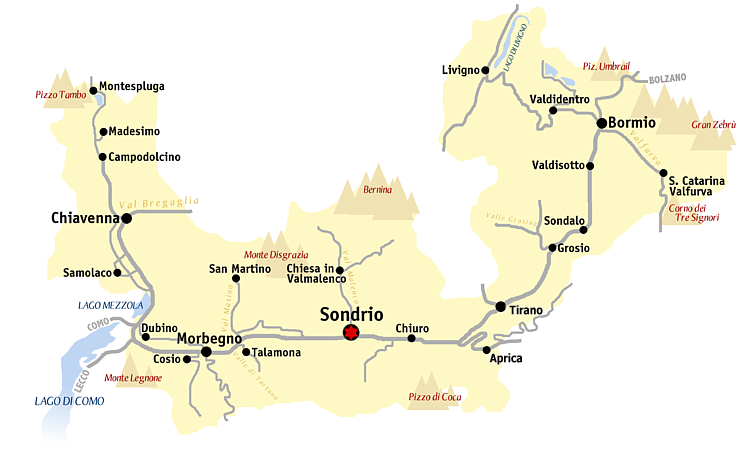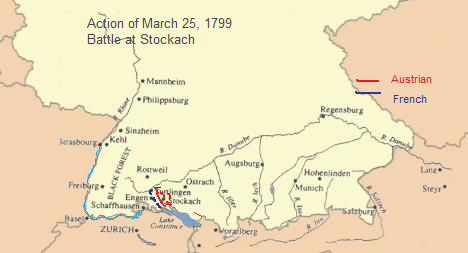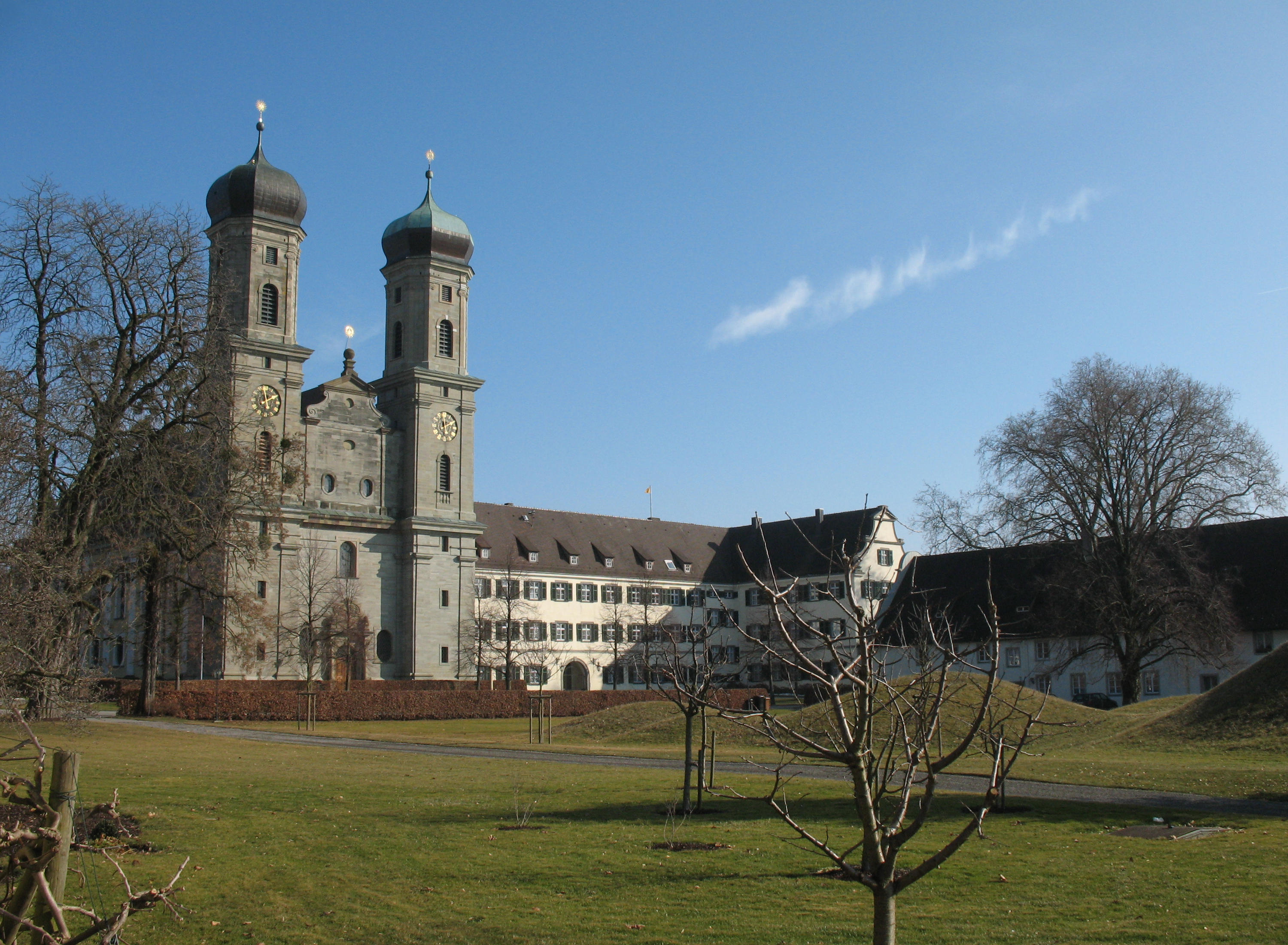|
Ludwig Wolff De La Marselle
Ludwig Wolff de la Marselle or Ludwig Dominik Joseph Regis Wolff de la Marselle (13 March 1747 – 14 October 1804) was a general in Habsburg Austrian service in the French Revolutionary Wars. He was born and died in Mons, Austrian Netherlands (present-day Belgium). Military service At the age of 14 he joined the Infantry as a Cadet; by age 23, he was an officer, in the 38th Infantry Regiment (L'Aisne). At the beginning of Austria's wars with Turkey, 1788, he was a major in the Gemmingen Infantry. In 1790 he served in Habsburg military to suppress the uprising in the Austrian Netherlands, with particularly distinguished service at the Battle of Falmagne, after which he was promoted to lieutenant colonel of the Clerfayt Infantry N. 9, a Walloon regiment. In 1794, he acquired command of the Grenadier Battalion Rousseau and fought with this regiment during the Rhine Campaign of 1795 in the Army of the Upper Rhine under command of Dagobert Sigmund von Wurmser. At the 1795 Sieg ... [...More Info...] [...Related Items...] OR: [Wikipedia] [Google] [Baidu] |
Mons, Belgium
Mons (; German language, German and nl, Bergen, ; Walloon language, Walloon and pcd, Mont) is a City status in Belgium, city and Municipalities of Belgium, municipality of Wallonia, and the capital of the Hainaut Province, province of Hainaut, Belgium. Mons was made into a fortified city by Count Baldwin IV, Count of Hainaut, Baldwin IV of County of Hainaut, Hainaut in the 12th century. The population grew quickly, trade flourished, and several commercial buildings were erected near the ''Grand’Place''. In 1814, King William I of the Netherlands increased the fortifications, following the fall of the First French Empire. The Industrial Revolution and coal mining made Mons a centre of heavy industry. In 1830, Belgium gained its independence and the decision was made to dismantle the fortifications, allowing the creation of large boulevards and other urban projects. On 2324 August 1914, Mons was the location of the Battle of Mons. The British were forced to withdrawal (milita ... [...More Info...] [...Related Items...] OR: [Wikipedia] [Google] [Baidu] |
Schwetzingen
Schwetzingen (; pfl, Schwetzinge) is a German town in northwest Baden-Württemberg, around southwest of Heidelberg and southeast of Mannheim. Schwetzingen is one of the five biggest cities of the Rhein-Neckar-Kreis district and a medium-sized centre between Heidelberg and Mannheim. The city is most famous for Schwetzingen Palace and the Schlosstheater. The palace grounds also feature a mosque, the oldest in Germany. Although not functional, it was used by Muslim prisoners in the Franco-Prussian War. Geography Schwetzingen is located in the ''Rhine-Neckar-triangle'' in the plain of the Rhine river, lying west of the Odenwald and in the east of the Rhine. A small stream, the Leimbach, runs through the city before joining the Rhine. Neighbouring municipalities The following municipalities, listed clockwise beginning in the north, border on the city limits of Schwetzingen: Mannheim, Plankstadt, Oftersheim, Hockenheim, Ketsch and Brühl. The municipal area of Schwetzing ... [...More Info...] [...Related Items...] OR: [Wikipedia] [Google] [Baidu] |
Valtelline
Valtellina or the Valtelline (occasionally spelled as two words in English: Val Telline; rm, Vuclina (); lmo, Valtelina or ; german: Veltlin; it, Valtellina) is a valley in the Lombardy region of northern Italy, bordering Switzerland. Today it is known for its ski center, hot spring spas, bresaola, cheeses (in particular Bitto, named after the river Bitto) and wines. In past centuries it was a key alpine pass between northern Italy and Germany and control of the Valtellina was much sought after, particularly during the Thirty Years' War as it was an important part of the Spanish Road. Geography The most important comune of the valley is Sondrio; the others major centers are Aprica, Morbegno, Tirano, Bormio and Livigno. Although Livigno is on the northern side of the alpine watershed, it is considered part of Valtellina as it falls within the province of Sondrio. History Antiquity and the middle ages The region was conquered in 16 BC by the Romans. By the 5th centu ... [...More Info...] [...Related Items...] OR: [Wikipedia] [Google] [Baidu] |
Battle Of Stockach (1799)
The Battle of Stockach occurred on 25 March 1799, when French and Austrian armies fought for control of the geographically strategic Hegau region in present-day Baden-Württemberg.There was a second battle the following year—see Second Battle of Stockach. Some older English sources refer to this as the Battle of Stochach and some French chronicles as Battle of Liptingen (or Leibtengen). In the broader military context, this battle constitutes a keystone in the first campaign in southwestern Germany during the Wars of the Second Coalition, part of the French Revolutionary Wars. It was the second battle between the French Army of the Danube, commanded by Jean-Baptiste Jourdan, and the Habsburg Army under Archduke Charles; the armies had met a few days earlier, 20–22 March, on the marshy fields southeast of Ostrach and the Pfullendorf heights. The Austrian Army's superior strength, almost three-to-one, forced the French to withdraw. At Stockach, the French concentrated the ... [...More Info...] [...Related Items...] OR: [Wikipedia] [Google] [Baidu] |
Battle Of Ostrach
The Battle of Ostrach, also called the Battle by Ostrach, occurred on 20–21 March 1799. It was the first non-Italy-based battle of the War of the Second Coalition. The battle resulted in the victory of the Austrian forces, under the command of Archduke Charles, over the French forces, commanded by Jean-Baptiste Jourdan. The battle occurred during Holy Week, 1799, amid rain and dense fog. Initially, the French were able to take, and hold, Ostrach and the nearby hamlet of Hoßkirch plus several strategic points on the Ostrach marsh. As the engagement began, Habsburg numerical superiority overwhelmed French defenses. By evening, the French left wing was flanked and Jourdan's men retreated from Ostrach to the Pfullendorf heights. On the next morning, as Jourdan considered a counter-attack, the weather broke, and he could look down on the Austrian battle array. The numbers and dispositions of the Austrians convinced him that any attack would be useless, and that he could not hope to ... [...More Info...] [...Related Items...] OR: [Wikipedia] [Google] [Baidu] |
Bregenz
Bregenz (; gsw, label= Vorarlbergian, Breagaz ) is the capital of Vorarlberg, the westernmost state of Austria. The city lies on the east and southeast shores of Lake Constance, the third-largest freshwater lake in Central Europe, between Switzerland in the west and Germany in the northwest. Bregenz is located on a plateau falling in a series of terraces to the lake at the foot of Pfänder mountain. It is a junction of the arterial roads from the Rhine valley to the German Alpine foothills, with cruise ship services on Lake Constance. It is famous for the annual summer music festival ''Bregenzer Festspiele'', as well as the dance festival ''Bregenzer Spring''. History The first settlements date from 1500 BC. The Brigantii are mentioned by Strabo as a Celtic sub-tribe in this region of the Alps. In the 5th century BC, the Celts settled at Brigantion, which became one of their most heavily fortified locations. After a series of battles in 15 BC, the Romans conquered Brigantion ... [...More Info...] [...Related Items...] OR: [Wikipedia] [Google] [Baidu] |
Buchhorn
Friedrichshafen ( or ; Low Alemannic: ''Hafe'' or ''Fridrichshafe'') is a city on the northern shoreline of Lake Constance (the ''Bodensee'') in Southern Germany, near the borders of both Switzerland and Austria. It is the district capital (''Kreisstadt'') of the Bodensee district in the federal state of Baden-Württemberg. Friedrichshafen has a population of about 58,000. History 19th and early 20th century Friedrichshafen was established in 1811 as part of the new Kingdom of Württemberg, an ally of France during the Napoleonic Wars. It was named for King Frederick I of Württemberg, who privileged it as a free port and transshipment point for the kingdom's Swiss trade. Friedrichshafen was created from the former city of Buchhorn, whose coat of arms it adopted. The new city also incorporated the former village of Hofen, whose monastery was refurbished to serve as the summer residence of the Württemberger kings. King William I continued improving the city, including the purch ... [...More Info...] [...Related Items...] OR: [Wikipedia] [Google] [Baidu] |
Meersburg
Meersburg () is a town in Baden-Württemberg in the southwest of Germany. It is on Lake Constance. It is known for its medieval city. The lower town ("Unterstadt") and upper town ("Oberstadt") are reserved for pedestrians only, and connected by two stairways and a steep street ("Steigstrasse"). History The name of the town means "Castle on the Sea", referring to a castle which, according to a tradition from 1548, was built here in 630 by the Merovingian king Dagobert I. The commune obtained the status of free city in 1299, though nominally still under the Bishop of Constance. In 1803 it was annexed to the Land of Baden. After World War II, Meersburg was in the French military occupation area in Germany. Main sights The town is home to two castles, the Old Castle and the New Castle. The Old Castle, built by Merovingian King Dagobert I in the seventh century, is one of the oldest surviving castles in Germany. It is in private ownership. A self-guided tour is available. German ... [...More Info...] [...Related Items...] OR: [Wikipedia] [Google] [Baidu] |
Überlingen
Überlingen is a German city on the northern shore of Lake Constance (Bodensee) in Baden-Württemberg near the border with Switzerland. After the city of Friedrichshafen, it is the second largest city in the Bodenseekreis (district), and a central point for the outlying communities. Since 1 January 1993, Überlingen has been categorized as a large district city (Große Kreisstadt). History The history of Überlingen dates back to Roman times, but a variety of settlements pre-dated Roman occupation. Stone age settlements, discovered along the shoreline of Lake Constance, document that the lake supported several dozen thriving communities of 50–100 individuals. These settlements fall under the category of the Hallstatt culture, and their habits, dress, and diet has been illuminated through the excavation of archaeological sites, such as a major site in Hallstadt, Austria, excavated in the mid-to late 19th century.Alfons Semler, ''Überlingen: Bilder aus der Geschichte einer ... [...More Info...] [...Related Items...] OR: [Wikipedia] [Google] [Baidu] |
Lake Constance
Lake Constance (german: Bodensee, ) refers to three Body of water, bodies of water on the Rhine at the northern foot of the Alps: Upper Lake Constance (''Obersee''), Lower Lake Constance (''Untersee''), and a connecting stretch of the Rhine, called the Seerhein, Lake Rhine (''Seerhein''). These waterbodies lie within the Lake Constance Basin () in the Alpine Foreland through which the Rhine flows. The lake is situated where Germany, Switzerland, and Austria meet. Its shorelines lie in the German states of Baden-Württemberg and Bavaria, the Swiss cantons of Canton of St. Gallen, St. Gallen, Canton of Thurgau, Thurgau, and Canton of Schaffhausen, Schaffhausen, and the Austrian state of Vorarlberg. The actual location of the border Lake_Constance#International_borders, is disputed. The Alpine Rhine forms in its original course the Austro-Swiss border and flows into the lake from the south. The High Rhine flows westbound out of the lake and forms (with the exception of the Canton ... [...More Info...] [...Related Items...] OR: [Wikipedia] [Google] [Baidu] |
Jean-Baptiste Kléber
Jean-Baptiste Kléber () (9 March 1753 – 14 June 1800) was a French general during the French Revolutionary Wars. After serving for one year in the French Royal Army, he entered Habsburg service seven years later. However, his plebeian ancestry hindered his opportunities. Eventually, he volunteered for the French Revolutionary Army in 1792 and quickly rose through the ranks. Kléber served in the Rhineland during the War of the First Coalition, and also suppressed the Vendée Revolt. He retired to private life in the peaceful interim after the Treaty of Campo Formio, but returned to military service to accompany Napoleon in the Egyptian Campaign in 1798–99. When Napoleon left Egypt to return to Paris, he appointed Kléber as commander of the French forces. He was assassinated by a student in Cairo in 1800. A trained architect, Kléber, in times of peace, designed a number of buildings. Biography Early career Kléber was born in Strasbourg, where his father worked as ... [...More Info...] [...Related Items...] OR: [Wikipedia] [Google] [Baidu] |
Battle Of Wetzlar (1796)
The Battle of Wetzlar (15 June 1796) saw a Habsburg Austrian army led by Archduke Charles, Duke of Teschen launch an attack on a Republican French army under Jean-Baptiste Jourdan in its defenses on the Lahn River. The War of the First Coalition action ended in an Austrian victory when most of the French army began retreating to the west bank of the Rhine River. On the 19th the combat of Uckerath was fought as the Austrians pursued the French left wing. Wetzlar is located in the state of Hesse in Germany a distance of north of Frankfurt. In the Rhine Campaign of 1796, Jourdan's ''Army of Sambre-et-Meuse'' won a foothold on the east bank of the Rhine after defeating its opponents at Altenkirchen on 4 June. This was part of a plan to lure Archduke Charles to the north so that the '' Army of Rhin-et-Moselle'' under Jean Victor Marie Moreau could breach the Rhine defenses in the south. The strategy worked as designed. When Charles came north with heavy forces to drive back Jo ... [...More Info...] [...Related Items...] OR: [Wikipedia] [Google] [Baidu] |








